




Tea lovers know the struggle of dealing with stubborn tea stains on their favorite mugs. No matter how much you scrub, these stains can be difficult to remove. But fear not! We have compiled a list of 5 easy and effective methods to help you get rid of those tea stains once and for all.
1. Baking Soda and Vinegar: This powerful combination is a tried and tested method for removing tea stains. Simply make a paste using baking soda and vinegar, apply it to the stained area, and let it sit for a few minutes. Then, gently scrub the stain with a sponge or brush and rinse with water.
2. Lemon and salt: Lemon is a natural bleaching agent and can work wonders on tea stains. Sprinkle some salt on the affected area, then rub it with half a lemon. The acid in the lemon will react with the salt and help lift the stain. Rinse with water afterwards.
3. Denture Tablets: If you have denture tablets lying around, they can be a great tool for removing tea stains. Fill your mug with warm water and drop in a denture tablet. Let it fizz and soak for a few minutes, then rinse the mug thoroughly. The effervescence of the tablet will help loosen and lift the stains.
4. Baking soda and water: Make a paste using baking soda and a small amount of water. Apply the paste to the tea stains and let it sit for about 30 minutes. Then, scrub the stains with a brush and rinse with water. This method is particularly effective for older and more stubborn stains.
5. White vinegar: If you don’t have any of the above ingredients, white vinegar can be a simple yet effective solution. Fill the stained mug with equal parts of white vinegar and water, and let it soak for a few hours or overnight. Rinse thoroughly with water afterwards, and your mug should be stain-free!
With these 5 easy and effective methods, you can say goodbye to those pesky tea stains and enjoy your favorite cuppa in a clean and spotless mug!
Remove Tea Stains
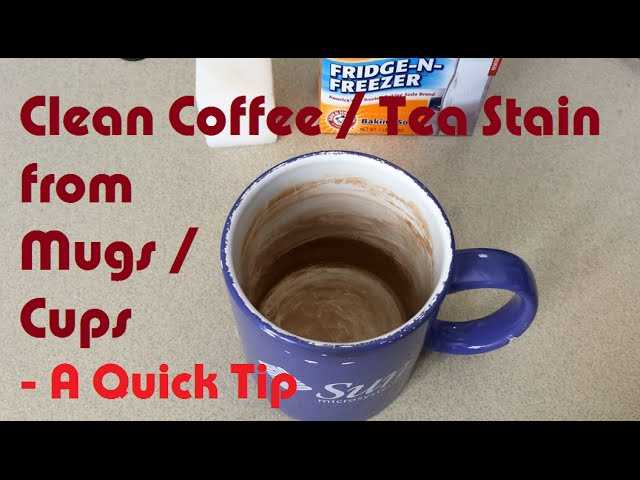
Method 1: Baking Soda and Water
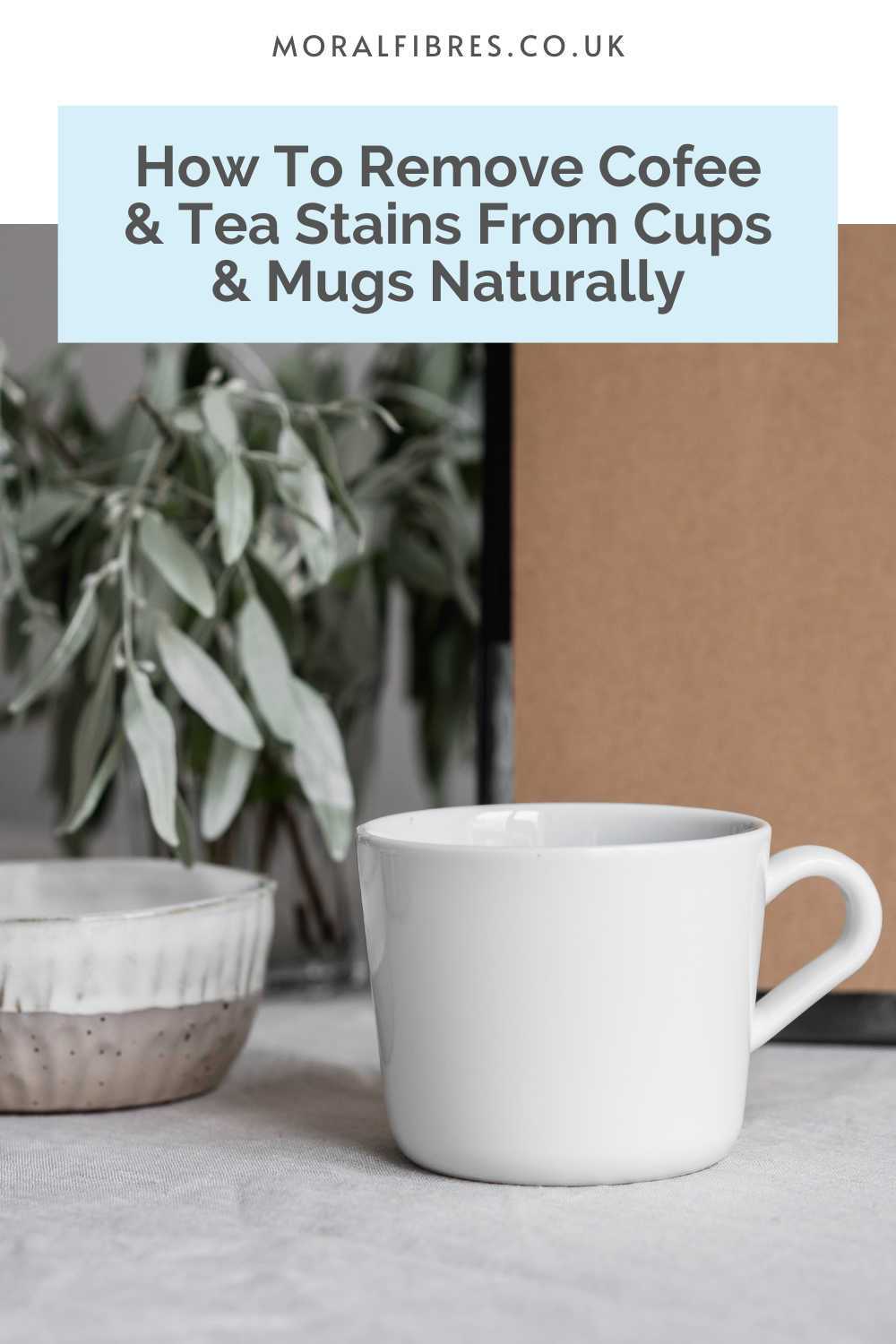
Mix equal parts of baking soda and water to make a paste. Apply the paste to the tea stains in the mug and scrub gently with a sponge or cloth. Rinse the mug thoroughly with water and dry it with a towel.
Method 2: Vinegar and Salt
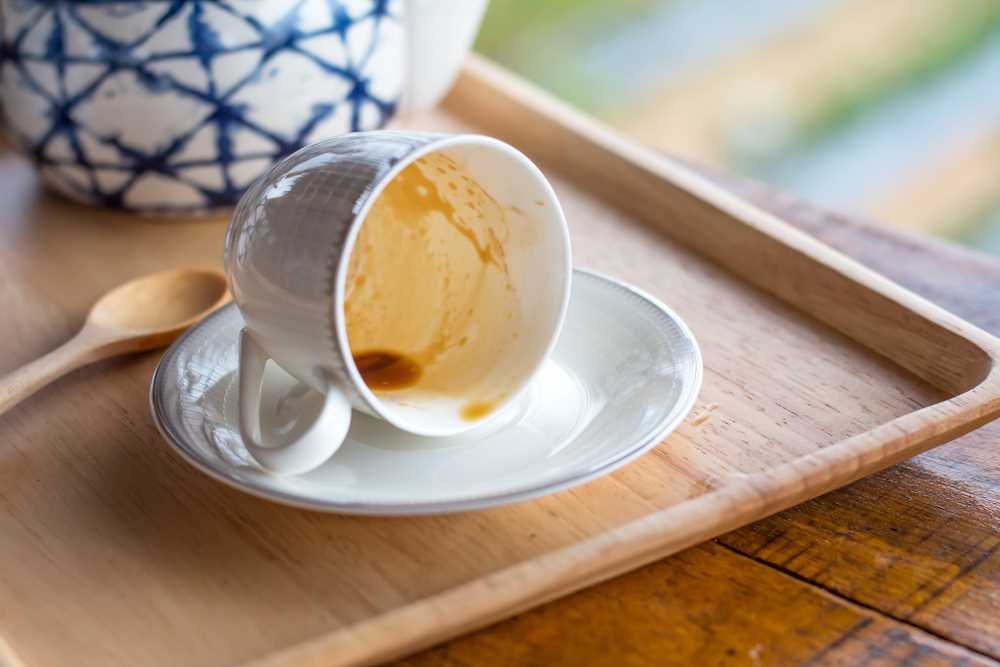
Mix equal parts of vinegar and salt to form a paste. Apply the paste to the tea stains and let it sit for a few minutes. Scrub the stains gently with a sponge or brush, then rinse the mug with water and dry it.
Method 3: Lemon Juice
Squeeze fresh lemon juice onto the tea stains and rub gently with a cloth or sponge. Let it sit for a few minutes, then rinse the mug with water and dry it.
Method 4: Denture Cleansing Tablets

Drop a denture cleansing tablet into a mug filled with warm water. Let the tablet dissolve and soak the mug for a few hours or overnight. Rinse the mug thoroughly with water and dry it.
Method 5: Commercial Stain Remover
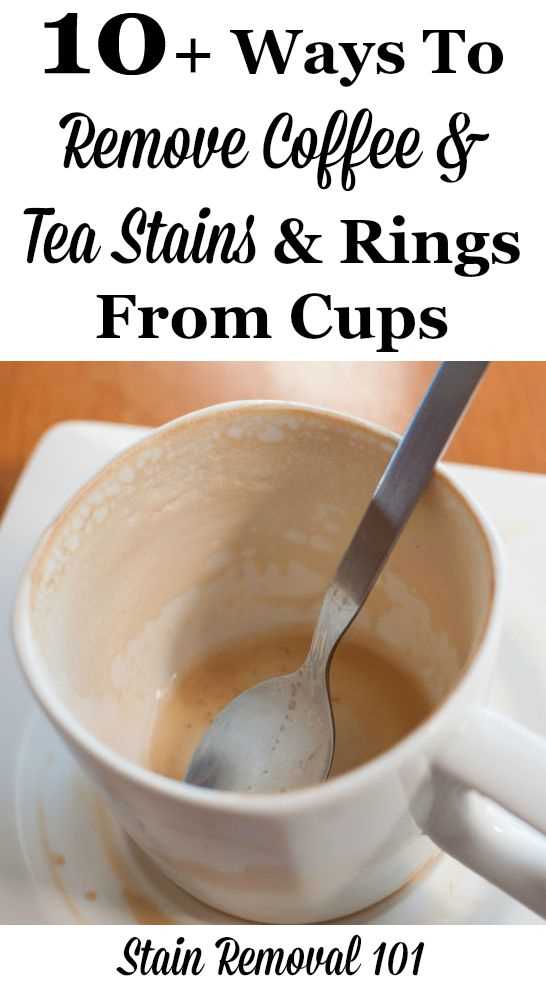
If the tea stains persist, you can try using a commercial stain remover specifically designed for mugs. Follow the instructions on the packaging for best results.
Note: Always read and follow the care instructions for your specific type of mug before attempting any stain removal method.
Method 1: Lemon Juice and Baking Soda
Lemon juice and baking soda are both natural and effective stain removers. This method can help you remove tea stains from your mugs easily.
Materials:
- Lemon juice
- Baking soda
- Water
- Soft cloth or sponge
Instructions:
- Mix equal parts lemon juice and baking soda in a small bowl. For larger stains, increase the quantities accordingly.
- Add a little bit of water to the mixture to form a paste.
- Take a soft cloth or sponge and dip it into the paste.
- Rub the paste onto the stained areas of the mug, applying gentle pressure. Make sure to cover the entire stained area.
- Let the paste sit on the stains for about 15-20 minutes.
- Use a clean damp cloth or sponge to wipe away the paste from the mug.
- Rinse the mug thoroughly with water to remove any remaining residue.
- Dry the mug with a clean cloth.
Note: If the stain is stubborn, you can repeat the process or let the paste sit on the stain for a longer time before wiping it away.
| Pros | Cons |
|---|---|
|
|
Method 2: Vinegar Soak
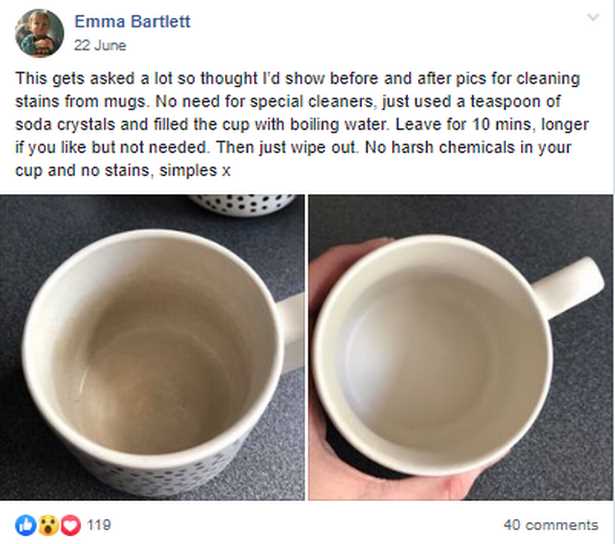
Another effective method for removing tea stains from mugs is to use vinegar. Vinegar contains acetic acid, which helps to dissolve the stains and remove any residue left behind.
Here’s how to use vinegar to remove tea stains from your mugs:
- Fill a sink or a large bowl with equal parts vinegar and hot water. You can also use a smaller container if you prefer.
- Submerge the stained mugs in the vinegar solution, making sure they are fully covered.
- Let the mugs soak for at least 30 minutes. You can leave them overnight for stubborn stains.
- After soaking, use a sponge or a cloth to scrub the stains gently. The tea stains should come off easily.
- Rinse the mugs with warm water to remove any vinegar residue.
- Dry the mugs thoroughly before using them again.
Vinegar is a natural cleaning agent and is safe to use on most mug materials, including porcelain, ceramic, and glass. However, it’s always a good idea to test a small, inconspicuous area of the mug first to ensure that the vinegar does not cause any damage or discoloration.
Remember to always follow the manufacturer’s instructions and recommendations for cleaning and maintenance of your mugs, as some materials may require specific cleaning methods.
Method 3: Salt Scrub

A salt scrub is another effective method for removing tea stains from mugs. Salt acts as a natural abrasive, helping to scrub away stubborn stains. Follow the steps below to perform a salt scrub:
- Fill the stained mug with warm water.
- Add a generous amount of salt to the water. Alternatively, you can dampen the inside of the mug and sprinkle salt onto the stains.
- Using a sponge or cloth, scrub the inside of the mug in a circular motion. Pay extra attention to the stained areas.
- Rinse the mug thoroughly with warm water to remove any remaining salt.
- Inspect the mug to ensure all tea stains have been removed. If there are still stains present, repeat the process or try another method.
- Dry the mug with a clean cloth or leave it to air dry.
Note: Avoid using salt scrub on delicate or painted mugs, as it may cause damage to the surface. It is always best to test any cleaning method on a small, inconspicuous area first.
Method 4: Denture Tablets
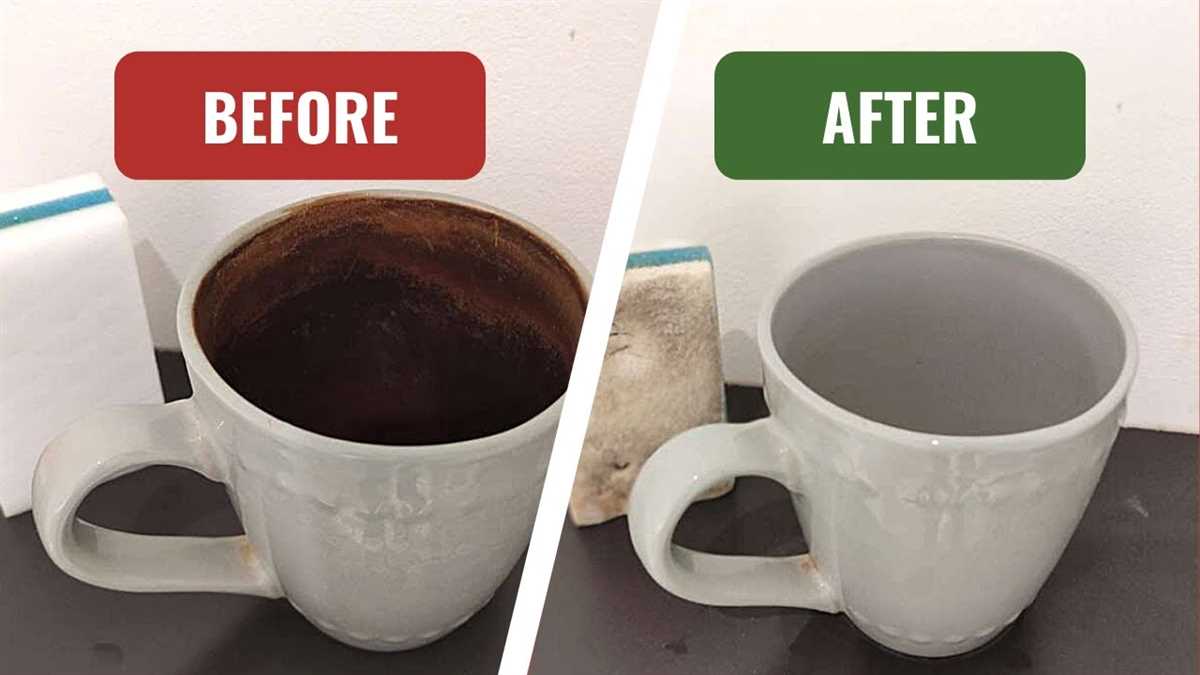
If the tea stains in your mug are particularly stubborn, you can try using denture tablets to remove them. Denture tablets contain ingredients that can help break down stains and remove them from the surface of your mug.
- Fill the stained mug with warm water.
- Drop one or two denture tablets into the mug.
- Allow the tablets to dissolve completely.
- Leave the mug to soak for at least 30 minutes, or overnight for tougher stains.
- After the soaking time, empty the mug and scrub the inside with a sponge or brush.
- Rinse the mug thoroughly to remove any remaining residue.
- Inspect the mug to see if the stains have been successfully removed. If not, you can repeat the process or try another method.
Note: It’s important to read the instructions on the denture tablets packaging and follow the recommended usage guidelines. Some denture tablets may not be suitable for certain mug materials or may require different soaking times.
Method 5: Hydrogen Peroxide
If the tea stains on your mugs are particularly stubborn, you can try using hydrogen peroxide to remove them. Hydrogen peroxide is a powerful cleaning agent that can help break down the stains and make them easier to remove.
What You’ll Need:
- Hydrogen peroxide
- Baking soda
- Water
- A soft cloth or sponge
Steps:
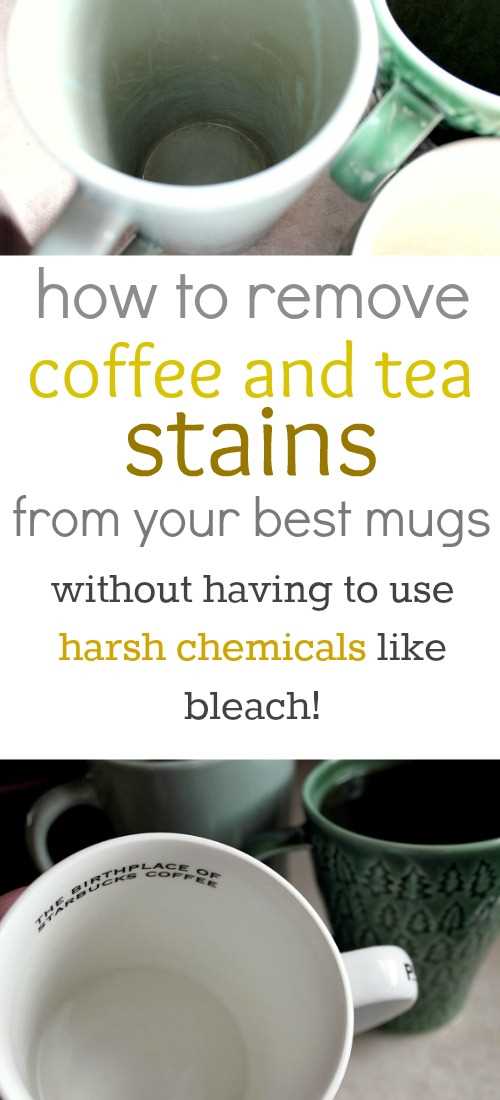
- Mix a solution of equal parts hydrogen peroxide and water.
- Dip a soft cloth or sponge into the solution and apply it to the tea-stained areas of the mug.
- Leave the solution on the stains for a few minutes to allow it to penetrate and break down the stains.
- Scrub the stained areas with the cloth or sponge, applying some pressure if necessary.
- Rinse the mug thoroughly with water to remove any remaining hydrogen peroxide residue.
- If the stains are particularly stubborn, you can make a paste using hydrogen peroxide and baking soda. Apply the paste to the stains, scrub gently, and rinse.
Note: Hydrogen peroxide may have a bleaching effect on certain materials, so it’s important to test it on a small, inconspicuous area of the mug before using it on the whole surface.
| 1. | Always follow the manufacturer’s instructions for using hydrogen peroxide. |
| 2. | Wear gloves to protect your hands while using hydrogen peroxide. |
| 3. | Make sure to rinse the mug thoroughly after using hydrogen peroxide to remove any residue. |
FAQ
How can I remove tea stains from my mugs?
There are 5 easy and effective methods to remove tea stains from mugs. You can try using baking soda and water, vinegar and water, lemon juice and salt, denture tablets, or a mixture of hydrogen peroxide and dish soap.
What is the best method to remove tea stains from mugs?
While all 5 methods mentioned in the article are effective, the best method to remove tea stains from mugs depends on personal preference and the resources available. Some may find that using baking soda and water works best for them, while others may prefer using vinegar and water.
Can I use baking soda alone to remove tea stains from mugs?
While baking soda alone can help to remove tea stains from mugs, it is more effective when mixed with water. A paste can be made by mixing baking soda with a small amount of water, which can then be applied to the stained areas of the mug and scrubbed gently.
Are denture tablets effective in removing tea stains from mugs?
Yes, denture tablets can be very effective in removing tea stains from mugs. To use denture tablets, fill the mug with warm water and drop a denture tablet in. Allow the tablet to dissolve completely, and then scrub the mug with a sponge or brush. Rinse well afterwards to remove any remaining residue.
Can I use hydrogen peroxide to remove tea stains from mugs?
Yes, hydrogen peroxide can be used to remove tea stains from mugs. Mix equal parts hydrogen peroxide and dish soap, and apply the mixture to the stained areas of the mug. Allow it to sit for a few minutes, and then scrub gently with a sponge or brush. Rinse well afterwards.











